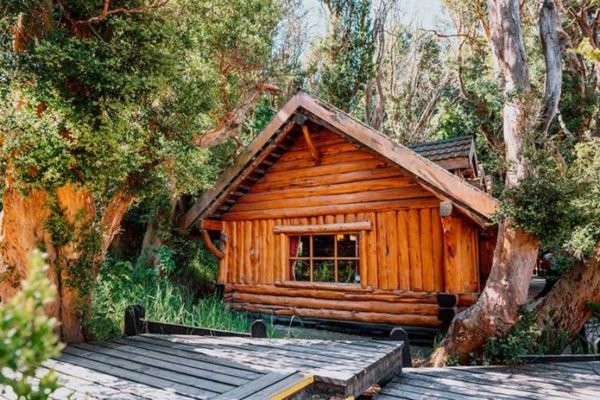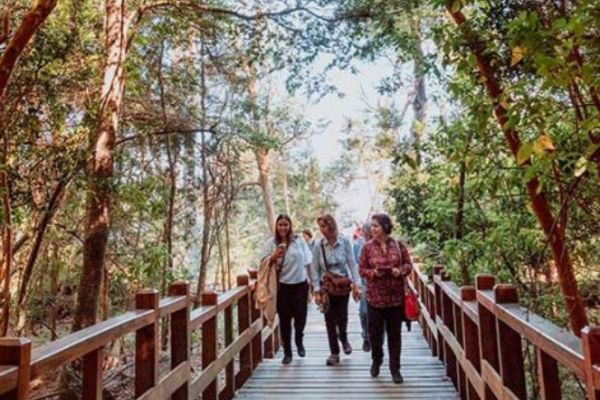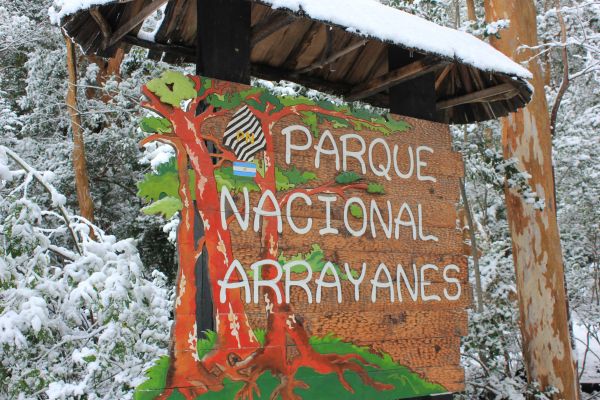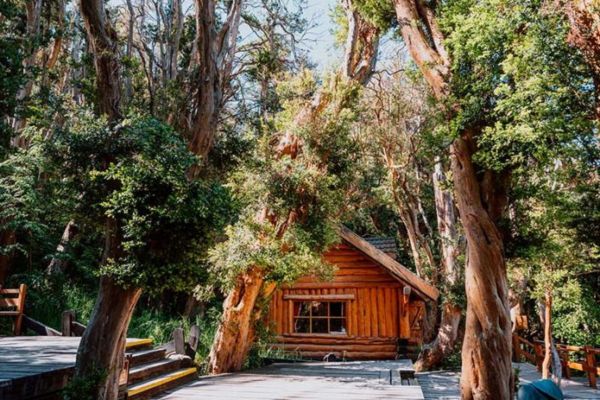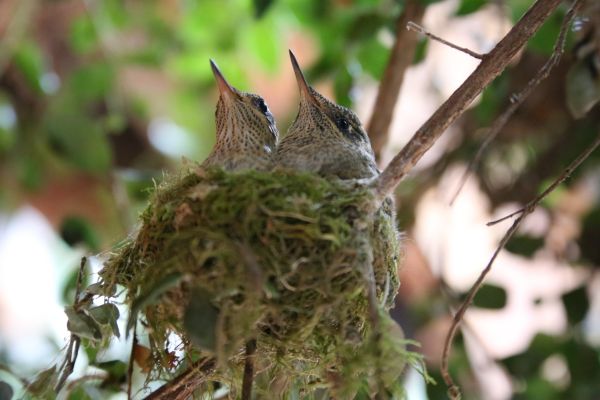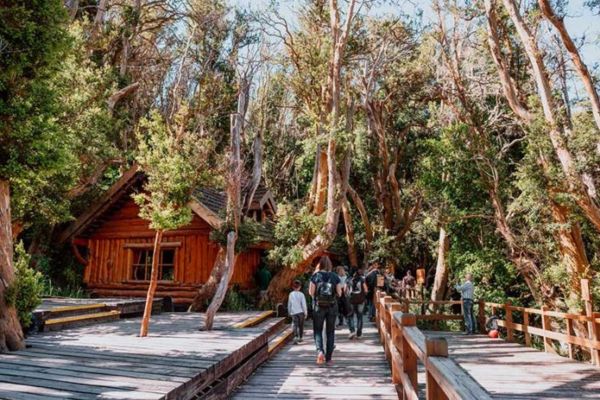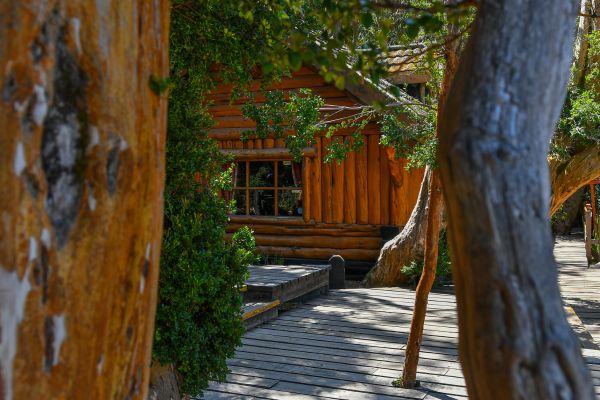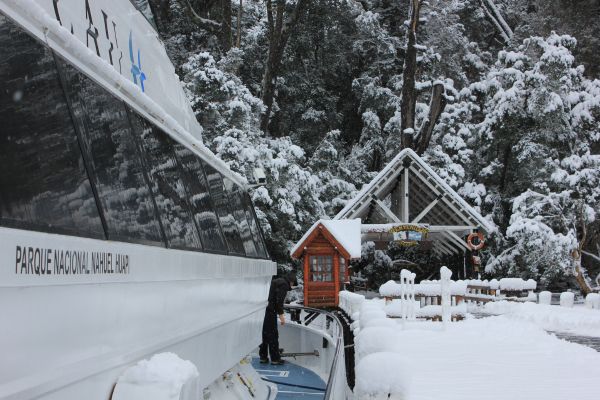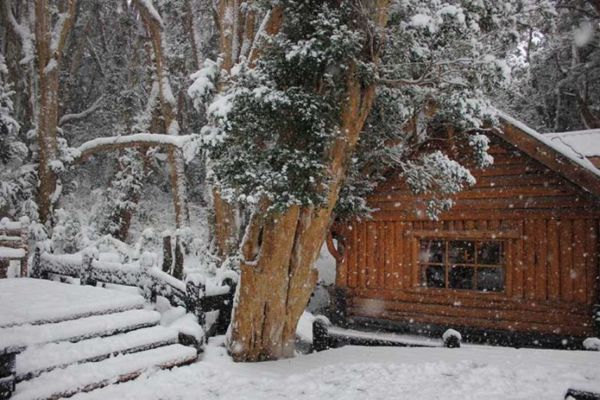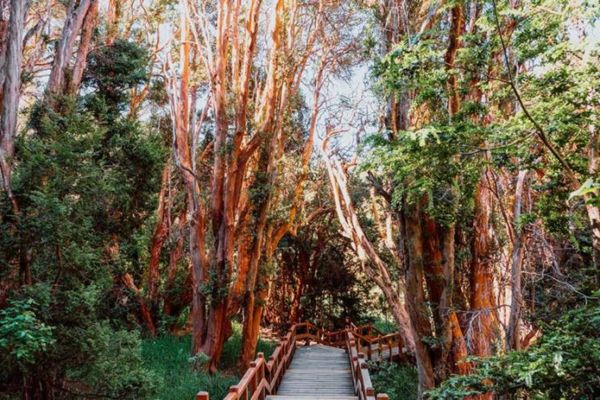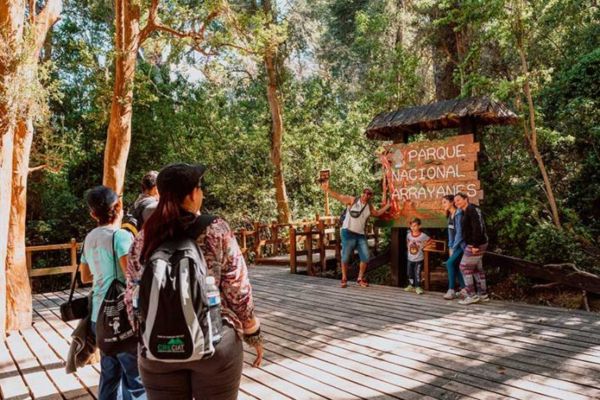BOSQUE DE ARRAYANES
(MYRTLE FOREST)
“Los Arrayanes” National Park was created in 1971. It stretches throughout the entire “Quetrihue” Peninsula with a surface of 1,840 has south of the Province of “Neuquen”, 12 km from “Villa La Angostura” on the north bank of “Nahuel Huapi”Lake.
The park was named by its former owner “Dr. Antonio Lynch” who discovered the forest at the end of the peninsula and later donated it to “Parques Nacionales” (National Parks) with the exception of the manor house, still preserved by his heirs as a symbol of Patagonian first settlers.
The goal of its creation was mainly to preserve this forest, since the other forest is only found in the west end of Victoria Island and is open for visitors under strict supervision to avoid its alteration or destruction.

FLORA
The park hosts one the only Myrtle or “Quetri” forest communities (Quetri derives from the indigenous settlers of the “Quetrihue” Peninsula, which means «place where “Quetris” can be found»).
This variety of tree, which is part of the family of Australian Eucalyptus, is usually found on lake shores, in very damp areas. We can only find them in the south of “Quetrihue” Peninsula and in the north of Victoria Island (Nahuel Huapi N.P)
FAUNA
Andean-Patagonian forests include threatened species of mammals like the “huillín”.
The most common species found are the coypu, grey fox, ferret and skunk. Bird species include seagull, cormorant (Phalacrocorax olivaceus) and the “bigua” which can be frequently seen on lake shores.
Great bustard or “cauquén” (Chloephaga picta) and “bandurria” species visit open and sunny areas.
Thrush, “chucao”, “huet-huet”, Patagonian “comesebo” and large wood pecker species inhabit forest areas. Native deer species include “pudu” (a threatened species), one of the smallest deer in the world and one of the most typical species in the region. Adult “pudu” can weigh up to 10 to 12 kg.


